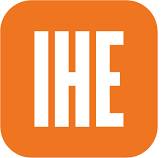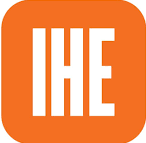
Higher Ed Drive
December 08, 2025 Student Success, Value and Affordability
The Education Department is raising awareness regarding what they deem to be ”low return” institutions by introducing a new feature that alerts first time FAFSA applicants if they have selected institutions whose graduates, on average, earn less than those with high school diplomas. The warning is for informational purposes and bears no impact on the FAFSA application process or eligibility determination. This initiative, live as of December 8, aims to make the college decision process more transparent as it relates to potential post-secondary outcomes.

Higher Ed Drive
November 13, 2025 Admissions, Enrollment Management Trends
The reporting requirements of four-year colleges practicing selective admissions are expected to expand in accordance with the U.S. Department of Education. This proposal would require institutions to submit the last six years of admission data. When submitting this data, information such as race, sex, as well as parental education level and GPA must be omitted. This rule is set forth to address institutional admission trends following race-based admissions under the guidance of the Supreme Court’s 2023 race-conscious practice prohibition. This new requirement raises concern on the privacy and potential misuse of student data under the current administration.

Higher Ed Drive
November 11, 2025 Student Success, Value and Affordability
A new $100,000 fee for H-1B visa requests has been introduced by the current administration. This increase is substantial, as previously fees ranged from $2,000 – $5,000. Many higher education institutions across the nation rely on this community of visa holders, as H-1B visa holders are often hired to lead in research. This new established fee is applicable to new petitioners from outside of the United States. Higher education institutions have challenged this new regulation, advocating for policy changes and exemptions. Although no changes have stemmed from these actions, universities are advised to explore alternative visa options and continue advocating about the impact of this policy on education and overall economy.

Higher Ed Drive
November 11, 2025 Admissions, Enrollment Management Trends
Undergraduate enrollment has been projected to grow by 2.4% in Fall 2026, the third consecutive year of enrollment growth. This growth is highly contributed to community college and trade school enrollment. Furthermore, an increase in short term certification and associate degree enrollment has been observed. Limited notable enrollment changes have been projected for bachelor and graduate degree-seeking students.

Higher Ed Drive
October 23, 2025 Pre-College Outreach, Admissions
Although SAT and ACT score averages for the class of 2025 prove to be an improvement from the previous year, scores still remain below pre-pandemic levels. This year, SAT scores for reading and writing averaged at 521, while math averaged at a score of 508. These scores are lower than the 2019 average scores of 531 and 528, respectively. Furthermore, this year, only about 30% of students who took the ACT met 3 or more of the established college readiness benchmarks. These exams continue to see a decrease in the number of test-takers, which is highly credited to the test-optional approach established by institutions during the pandemic, with nearly 90% of U.S. higher education institutions remaining test-optional for admission.

Higher Ed Drive
October 25, 2025 Student Success, Value and Affordability
A recent study from the University of Arkansas found only 9 of the 1,584 U.S. colleges could be classified as “equity engines”. This classification applies to institutions where at least 34% of students receive Pell Grants, and among those, 55% graduate within six years. The exclusivity of U.S. colleges leaves many low-income students lacking equitable access to college. The study recommends expanded investment in colleges that may be close to fulfilling the established “equity engine” qualifications. Institutions more generally must also be willing to undergo institutional changes that embrace shared and equitable learning opportunities.

Inside Higher Ed
October 07, 2025 Admissions
In August 2025, international student arrivals to the U.S. dropped by 19% compared to the previous year, largely due to visa delays, paused interviews, and policy challenges. The decline was especially sharp among students from Africa, Asia, and the Middle East, with countries like Iran, Ghana, and India seeing dramatic reductions. While official government data (SEVIS) shows a slight increase in international student enrollment, experts argue this figure is likely misleading or incomplete. Many students, particularly from India, were forced to defer their studies after being unable to secure visa appointments in time. This trend raises serious concerns for U.S. universities, which depend heavily on international students for tuition revenue and global engagement.

Inside Higher Ed
October 07, 2025 Student Success, Value and Affordability
College students often underestimate the cost of attending college. Only about 27% of students claim to fully understand the expenses and costs associated with tuition, housing, and other fees. Students share that these costs and other unanticipated costs could impact their active enrollment at collegiate institutions. Although institutions can often offer emergency aid and other financial support to students, many are unaware of these resources. The survey in this article highlights the current disconnect between available institutional support efforts and student knowledge and awareness. Cost transparency and improved communication efforts can assist with student retention related to financial matters.

HigherEd Dive
September 23, 2025 Admissions, Research
At the NACAC Conference, researchers presented findings regarding diversity in college admissions. Data from 17 universities showed that while Black and Hispanic students are applying in growing numbers, their admit rates are not reflective of this. The study found that colleges overwhelmingly prioritize academic factors like GPA and curriculum strength over essays or personal attributes, countering myths that race alone drives admission. Researchers warned that demographic changes and opaque institutional priorities complicate public perceptions of fairness in admissions.

HigherEd Dive
The federal Grad PLUS loan program was recently eliminated via the “One Big Beautiful Act” . This program allowed graduate students to borrow up to their full cost of attendance. The end of the Grad PLUS program will impost strict lifetime borrowing limitations, which may drive students toward the use of private loans with higher interest rates. While only 16% of graduate students used Grad PLUS, it accounted for 32% of federal loan disbursements and helped finance the most expensive programs. Critics argue the program fueled rising tuition and excessive debt, while supporters warn its end could reduce graduate enrollment and force colleges to cut programs. Experts remain uncertain how the loss of Grad PLUS will reshape access to graduate education and the financial stability of higher education institutions.